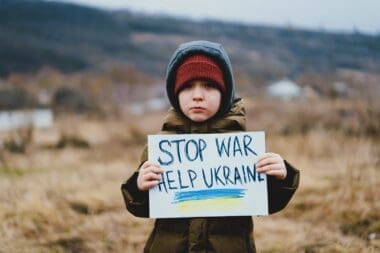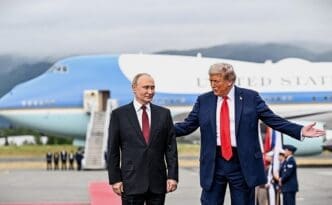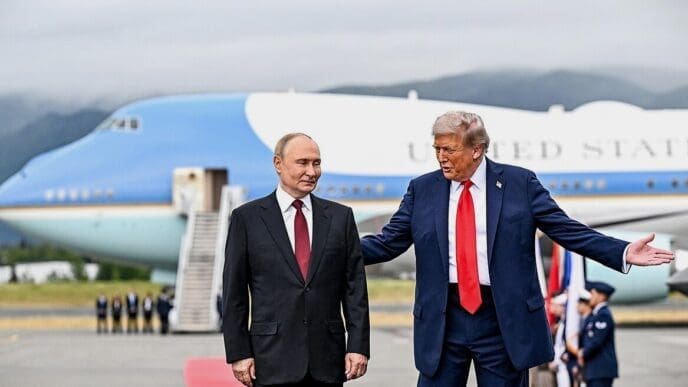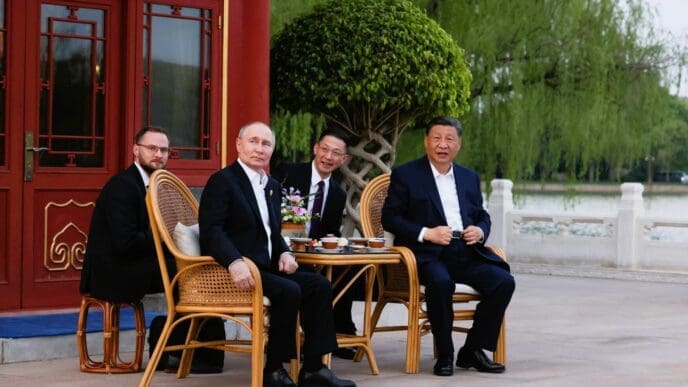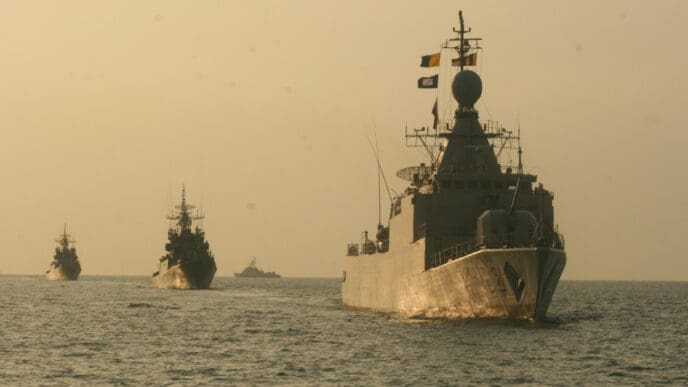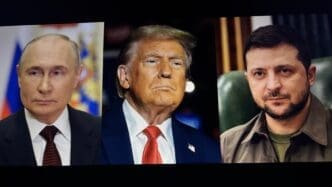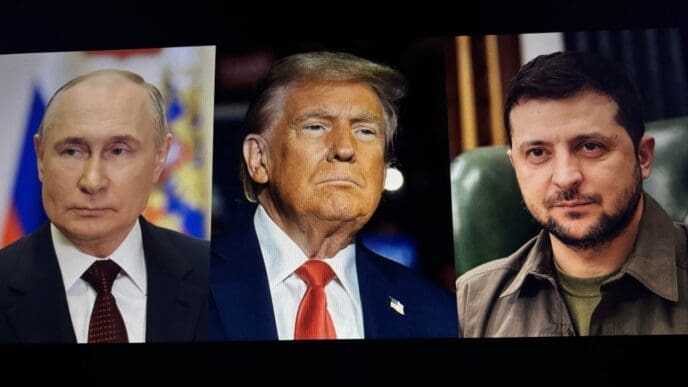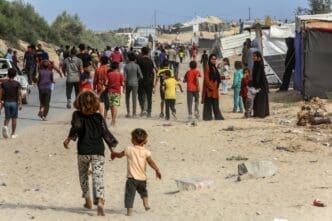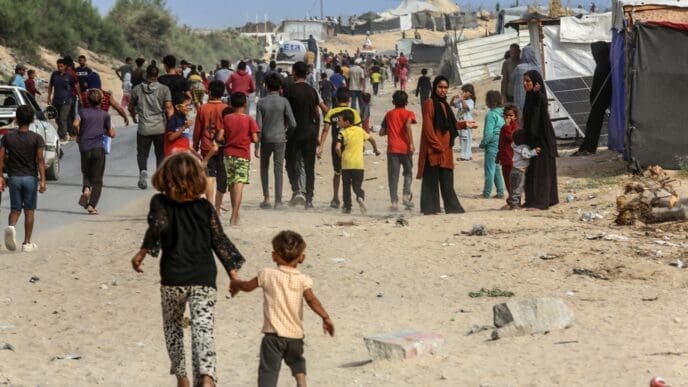In the town of Pavlohrad, eastern Ukraine, a former concert hall now serves as a refuge for those fleeing the relentless conflict. The decision to freeze US aid by President Trump has cast uncertainty over the vital assistance these evacuation centers provide.
In what was once a bustling concert hall, there are now rows of beds occupying the stage, a stark reminder of the ongoing war in Ukraine. Displaced locals, driven from their homes by the fierce battles with Russia, find temporary solace here, even as the Russian military expands its reach across towns and villages.
Kateryna Odraha, 83, recounts her experiences of survival during the German Nazi occupation in World War II. ‘Here we are alright. There’s food, warmth, and a place to wash,’ she shares. However, the sanctuary she describes is under threat due to the recent freeze of US humanitarian aid, pivotal for its operations.
The aid, amounting to roughly $7,000 monthly for this shelter alone, was primarily funded by the US. President Trump’s recent 90-day suspension of such aid has had far-reaching implications, impacting locations far removed from Washington’s political sphere.
Illia Novikov, who coordinates the Pavlohrad transit center run by the Coordination Aid Center charity, describes the abruptness of this change. ‘Right now, we have no idea what the future holds,’ he says. The US aid supported critical services such as transportation for evacuations, staff salaries, legal and psychological support, and transit assistance to safer regions.
On a typical day, about 60 individuals find refuge in the center. Yet, when Russian bombardment intensifies, the number can exceed 200. Many arrivals have lived for months in basements, lacking electricity, running water, and adequate food supplies.
Vasyl Odraha, 58, had initially stayed in his home village despite the increasing artillery and bomb attacks. He believed that Trump’s election would swiftly end the conflict, but as the war encroached closer, evacuating became unavoidable. ‘We put our hopes in Trump’s election,’ he remarked. Ultimately, as danger drew near, they fled before dawn, narrowly escaping death.
The aid freeze has repercussions beyond shelters, straining Ukraine’s war-torn economy further. Energy projects, veteran support, psychological help lines, cybersecurity, healthcare, independent media, and even border infrastructure projects are suffering.
Ukrainian President Volodymyr Zelenskyy warns that the country could lose between $300 million and $400 million in aid across various sectors, primarily energy, a major target of Russian aggression. Attempts are being made to bridge this gap with European or domestic resources.
While military aid from the US continues, only 42% of the funds approved by Congress have been received. The war shows no signs of abating, implying the ongoing need for assistance to civilians.
As Novikov admits, the need for evacuations and support will persist with new frontline developments. ‘The evacuations will continue for a long time. We must be ready to keep providing help,’ he concludes.
The situation in Ukraine remains dire, with the aid freeze adding another layer of complexity to an already challenging environment. As citizens continue to grapple with the effects of war, the international community’s role remains crucial in providing relief and support.

